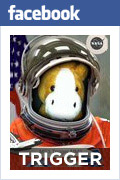TEAM VIDEOS
This is a collection of videos about the MMS mission, instrumentation, and results, including insight from team members about their own research and the practical applications of the mission science.
Alexander Barrie (GSFC)
NASA EDGE and Fast Plasma Investigations Lead Alexander Barrie for MMS discuss the challenge of keeping the instruments running and properly calibrated while examining magnetic reconnection.
Conrad Schiff (GSFC)
Plasma Physicist Conrad Schiff updates NASA EDGE on the health and performance of all four spacecraft. With four times the data, NASA is getting an unprecedented look at the phenomenon of magnetic reconnection.
Daniel Gershman (GSFC)
NASA EDGE and Plasma Scientist Daniel Gershman discuss how the Magnetospheric Multiscale Mission Team is processing and handling the data from the spacecrafts.
Tom Moore (GSFC)
Tom Moore is the project scientist for MMS at Goddard Space Flight Center.
- Overview of the MMS mission [7:30] Sep 2011 DOWNLOAD
Michael Hesse (GSFC)
Dr. Michael Hesse is the Lead scientist on the MMS Theory & Modeling Team.
- Magnetic reconnection [1:44] Mar 2011 DOWNLOAD
- Modeling magnetic reconnection [2:51] Mar 2011 DOWNLOAD
Stephen Fuselier (Lockheed Martin Advanced Technology Center)
Dr. Stephen Fuselier is a senior manager at Lockheed Martin Advanced Technology Center, supervising a team of 45 scientists and engineers in the space physics department. Together with other IBEX team members, they designed, constructed, and tested the IBEX-Lo sensor, which will detect particles to help scientists create the first map of the Solar System's boundary.
- The orbits of the MMS spacecraft [3:47] Mar 2011 DOWNLOAD
- Stephen Fuselier discusses what inspired him to study space science [1:45] Mar 2011 DOWNLOAD
David Young (SWRI)
Dr. David Young from the Southwest Research Institute is the lead investigator on the MMS Hot Plasma Composition Analyzer.
- MMS Hot Plasma Composition Analyzer [1:50] Feb 2010 DOWNLOAD
Roy Torbert (University of New Hampshire)
Dr. Roy Torbert is the Deputy Principal Investigator of the SMART team, and lead of the FIELDS instrument suite for MMS that measures the spectrum of electric and magnetic fields in Earth's magnetosphere.
- What scientific questions was MMS designed to explore in the magnetosphere? [4:47] Feb 2010 DOWNLOAD
- MMS - spacecraft separation strategy [2:10] Feb 2010 DOWNLOAD
- FIELDS instrument magnetic and electric field sensors [3:24] Feb 2010 DOWNLOAD
- Handling the large amount of MMS data collected by the instruments [2:11] Feb 2010 DOWNLOAD
Chris Russell (UCLA)
Professor C. T. Russell is a member of the faculties of both the Institute of Geophysics and Planetary Physics and the Department of Earth and Space Sciences. In addition to his work with MMS, he is the principal investigator on the POLAR mission; a co-investigator on the magnetometer team on the Cassini mission to Saturn; the ROMAP investigation on the Rosetta mission to comet Churyumov-Gerasimenko; the IMPACT investigation on the STEREO mission to study solar and solar wind disturbances; the THEMIS mission to study substorms; and the magnetometer investigation on the Venus Express mission to study the solar wind interaction with Venus.
- The science of MMS [5:27] Feb 2010 DOWNLOAD
- Why is the science of MMS important?
- How does your work connect to the greater picture of space weather?
- What is magnetic reconnection?
- Where does magnetic reconnection occur?
- Why does the MMS mission use four spacecraft?
- Who inspired you to study science?






